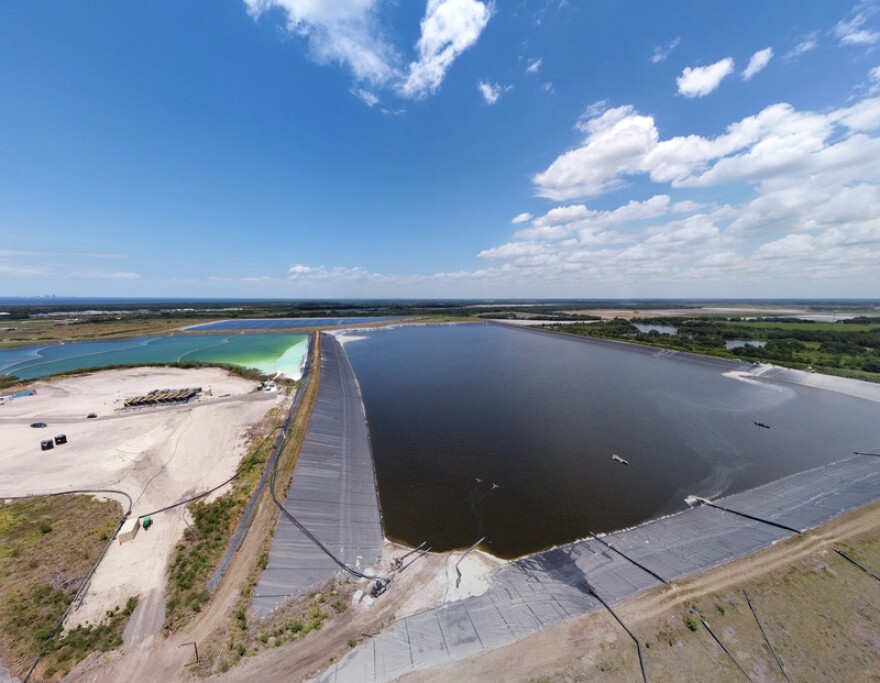The state hasn't released wastewater from Piney Point into Tampa Bay since April, but it may be forced to in the coming weeks if it keeps raining.
The Florida Department of Environmental Protection says “innovative water treatment technology” has removed most of the harmful nutrients like nitrogen and phosphorus from the ponds at Piney Point, a former phosphate processing plant.
But environmentalists aren’t expressed concern that the water could still do harm.
Rachael Curran is an environmental attorney and board member with Tampabay Waterkeeper, one of five environmental organizations that filed suit in federal court against the governor, state and operators of Piney Point.
She says the water treatment technology the DEP is touting sounds too good to be true.
"We know nothing about what that technology consists of," Curran said. "I do know that if it were that easy to make this water acceptable for discharge, and that easy to comply with the law, it would have been done a long time ago, years ago. So to suddenly be able to employ some sort of technology that nobody's ever heard of … we're to take that at face value?”
A report from the DEP says the treatment reduces the nutrient loading in the contaminated water by 97% to 99%. As a result, the treated discharges into would be less than 1% of the total annual load of nitrogen and phosphorus for Lower Tampa Bay, the report states.
But Curran said nutrients aren’t the only concern with the water coming out of Piney Point. There's also heavy metals, radioactivity, and low pH.
“The public is left in the dark as to as to what we're going to do until it's an emergency," she said. "And then we get that last minute, ‘Hey, we're running out of capacity. And it's okay, don't worry, we've somehow magically treated this water in a way that we weren't able to do for decades, in a matter of months.’”
Earlier this year, the state was forced to dump 215 million gallons of contaminated water into Tampa Bay after there was a leak at a pond inside a gypsum stack.
Officials say rainfall has filled the ponds to within 10.5 inches of overflowing. The area is expected to get at least that much rainfall by the end of September.
If that happens, the department says water levels at the site will need to be lowered to prevent water from overflowing into the surrounding areas.
And Curran said while everyone's distracted by Piney Point and the “looming crisis that still exists,” other stacks are expanding.
There's a public meeting on Aug. 25 concerning the New Wales expansion in Polk County, Florida's largest stack, which is 1,147-acres wide.
“There are four sinkholes at that facility that we know of already, including the 2016 sinkhole that discharged an equivalent amount of wastewater directly into the aquifer, the same amount as what was discharged into the bay at Piney Point," Curran said. "So it's not just a Piney Point issue. This is their stacks all throughout the region.”





